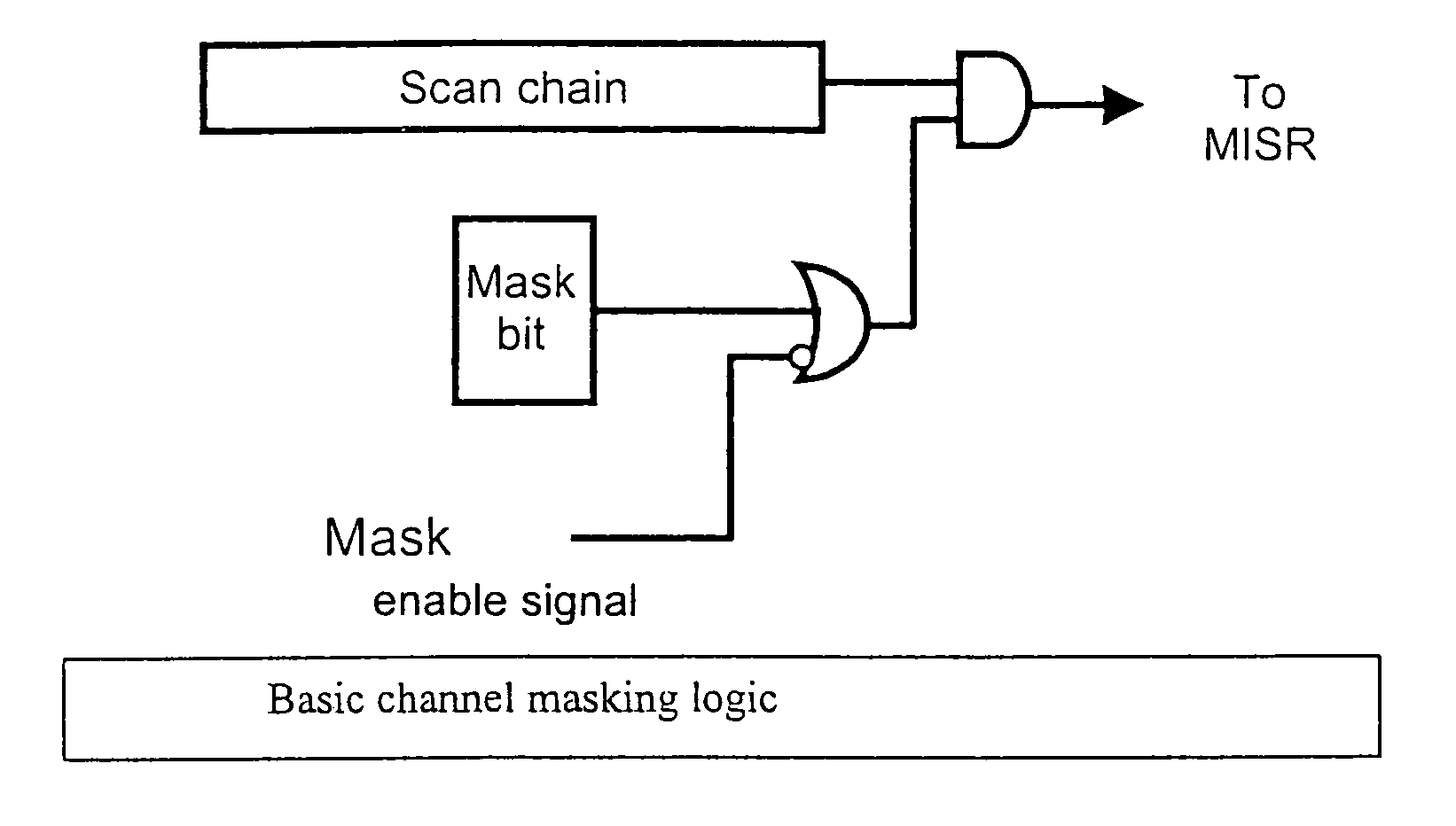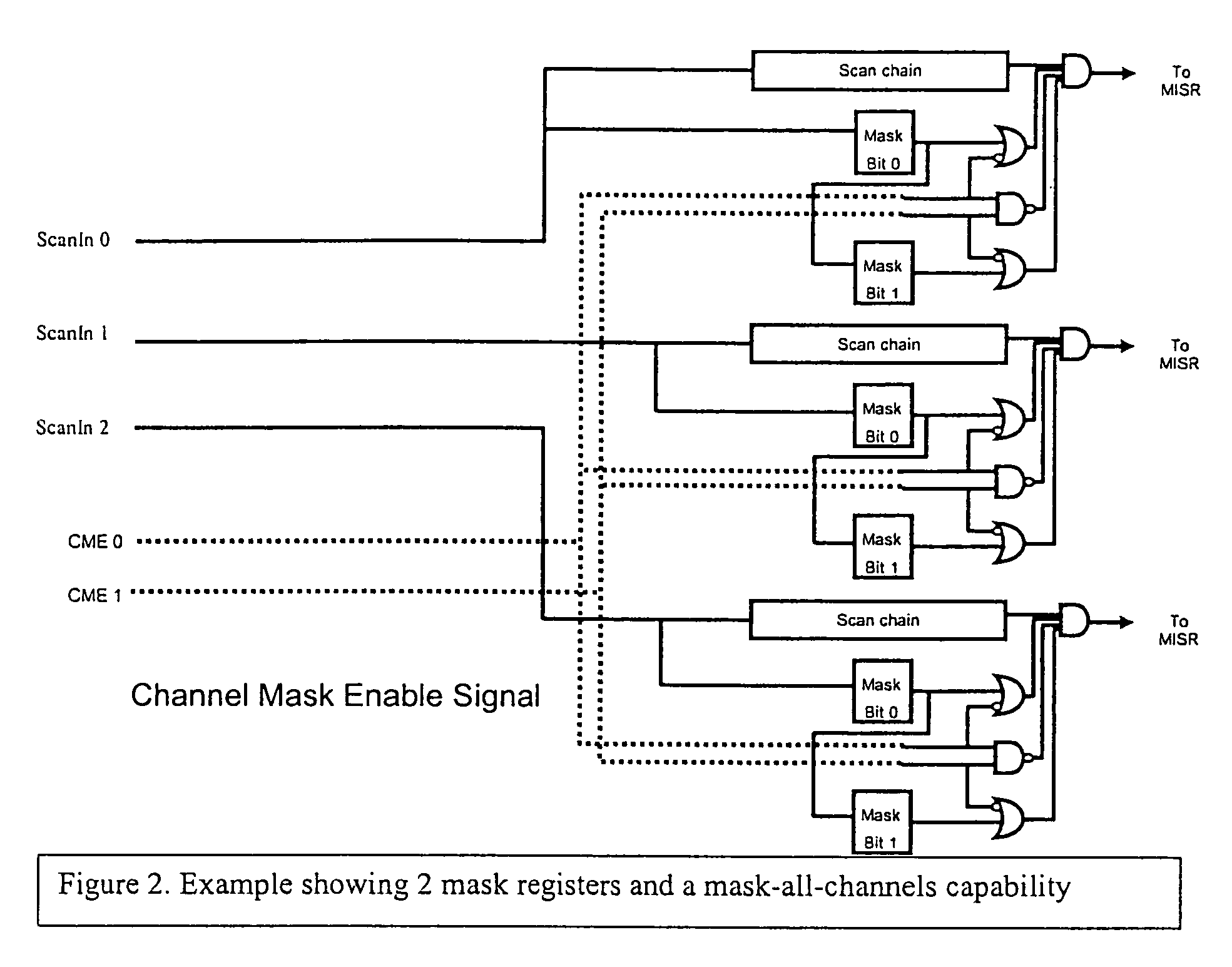Channel masking during integrated circuit testing
a technology of integrated circuits and masking, applied in the direction of electronic circuit testing, measurement devices, instruments, etc., can solve the problems of circuits that produce unknown responses, unpredictable final signatures, and exponential growth of signatures
- Summary
- Abstract
- Description
- Claims
- Application Information
AI Technical Summary
Benefits of technology
Problems solved by technology
Method used
Image
Examples
Embodiment Construction
[0011]An integrated circuit whose scan chains, or channels, scan into a signature register, such as a multiple-input signature register (MISR) for example, during testing, uses a channel masking apparatus and method for masking unknown values that appear in response data when automatic test pattern generation test vectors are applied to the circuit, while minimizing the over-masking of known values. The channel masking method allows for multiple channel mask registers; provides an ability to load channel mask registers prior to scanning out the responses for a single test, so that each test can use an independent mask register state; and provides an ability to re-load the channel mask registers multiple times during the same scan-out process.
[0012]The channel mask registers may be loaded from a test bus of the scan-in pins, which can also be used to observe MISRs by making them bidirectional. The mask registers can be scan-loaded from this test bus either by using a scan clock separ...
PUM
 Login to View More
Login to View More Abstract
Description
Claims
Application Information
 Login to View More
Login to View More - R&D
- Intellectual Property
- Life Sciences
- Materials
- Tech Scout
- Unparalleled Data Quality
- Higher Quality Content
- 60% Fewer Hallucinations
Browse by: Latest US Patents, China's latest patents, Technical Efficacy Thesaurus, Application Domain, Technology Topic, Popular Technical Reports.
© 2025 PatSnap. All rights reserved.Legal|Privacy policy|Modern Slavery Act Transparency Statement|Sitemap|About US| Contact US: help@patsnap.com



